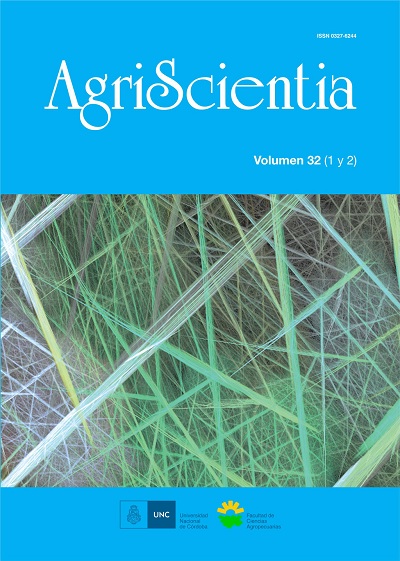Nitrogen use efficiency for wheat in semiarid region of Buenos Aires (Argentina): effects of the dose and timing application.
Main Article Content
Abstract
In semiarid regions optimal fertilization is difficult due to erratic rainfall. The aim of this study was to analyze the influence of climate variability on the response to different rates and timing of fertilization on wheat productivity and on efficiencies in the use of nitrogen in a site of the semiarid region of the province of Buenos Aires, Argentina. For five years, fertilization trials were conducted in wheat combining N rates (0, 25, 50 y 100 kg ha-1) and times of fertilization: Seeding (Ns) and tillering (Nm). Agronomic efficiency (EUF) for dry matter (MS) and grain, and apparent recovery of nitrogen (RAN) were evaluated. Interactions between variables (year, rates and times) and efficiencies were found. In Nm, significant correlations of all parameters were found with October rainfall. Protein for Ns and Nm was significantly and inversely correlated with full cycle rainfall. Significant correlations were found in EUF of MS and grain in this order: Full cycle rainfall> Spring rainfall> Oct rainfall> Set rainfall. Interannual climate variability showed the greatest influence on the nitrogen use efficiencies, regardless the application timing.
Downloads
Download data is not yet available.
Article Details
How to Cite
Martínez, J., Galantini, J., & Landriscini, M. (2015). Nitrogen use efficiency for wheat in semiarid region of Buenos Aires (Argentina): effects of the dose and timing application. AgriScientia, 32(1), 15–27. https://doi.org/10.31047/1668.298x.v32.n1.16553
Issue
Section
Articles





